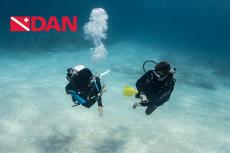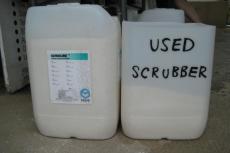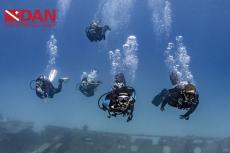In-Water Recompression: Risk vs Reward
When traveling to the most remote dive destinations, those left entirely untouched by the machinations of civilization, dealing with the potential for injury without the possibility of adequate medical treatment for days can become a source of anxiety and concern.
In isolated locations without the industry or population required to support medical facilities equipped to deal with dive related emergencies, in-water recompression (IWR) becomes an attractive prospect for dealing with decompression sickness, and a hotly debated issue. Used to treat divers immediately after DCS symptom onset in remote locations, in-water recompression involves re-submerging an injured diver in the hopes of driving gas bubbles back into solution to reduce symptoms, then bringing the diver to the surface slowly enough to allow for orderly elimination of excess gas. The practice involves serious risks, and potential complications of the process may outweigh the benefits, but for those divers attempting expeditions with aggressive dive profiles in the most remote of locations, a discussion of all available options can become necessary.
The process:
Depending on the specific protocols used, recompression in the field is performed at a depth of six or nine meters, and can last for several hours. Divers are generally submerged immediately after symptom presentation, and monitored by attendants who are with them in the water during the entire procedure. A good practice is to begin oxygen administration on the surface while the preparation for IWR is ongoing. Divers whose condition improves with oxygen administration on the surface may not need IWR. The use of full-face masks or hard hats with communication capability is frequently recommended, so that both the tender and the surface support team can monitor the injured diver, and to prevent against drowning, should the injured diver lose consciousness. A gas manifold capable of switching from oxygen to air is typically used to allow the tender to continuously provide an appropriate gas to the injured diver, and to serve as a method to quickly transition the injured diver onto standard air in the event of oxygen toxicity. IWR can require prohibitively large quantities of oxygen and air, to supply both the injured party, and their attendants with breathing gas for the length of the process. It is important to continue breathing oxygen on the surface for several hours after completion of IWR.
The risks:
The process of IWR presents a number of concerns with the possibility of serious consequences for untrained or poorly prepared divers. Attempts at in-water recompression have resulted in fatalities in the past, and a careful risk versus reward analysis must be undertaken before considering IWR. Divers will have oxygen toxicity, hypothermia, and dehydration to contend with when attempting IWR. Criticalchallenges can arise due to loss of consciousness in the injured diver, and an un-successful attempt at IWR may leave the diver in worse shape than they had been before the procedure. In addition to the difficulties that IWR presents with diver management and monitoring, some divers will have their condition degrade regardless of treatment, which could present additional complications in the water.
Add to this the fact that the divers who need immediate treatment the most are often too ill to safely submerge, and it can be a daunting task to manage the risks of IWR. Many cases of DCS will improve with just the administration of oxygen on the surface, which narrows the field of appropriate circumstances for recompression in the field considerably. Appropriate equipment and preparation may lessen some risks, but the most appropriate equipment for use in treating DCS in divers is a recompression chamber.
In-water recompression of any type is not currently recommended by DAN, and the medical and research communities are divided on the issue. Most diving medicine experts recognize the value of IWR in very specific circumstances, but there are a wide array of concerns and caveats that must be discussed before approving an IWR protocol. IWR using standard air has been shown to have a high failure rate, and while recompression using oxygen instead of air has been used successfully in some applications, it presents an additional set of risks. Divers considering the utility of in-water recompression for their own expeditions should carefully consider their own training and equipment capabilities, and perform an analysis of the possible risks and rewards of the procedure. In all but a very specific minority of cases the risks of IWR make it difficult to consider. In addition, some researchers have found that many cases of DCS, and most mild cases of DCS, show improvement even with delay to treatment exceeding 24 hours, which may further negate a benefit of IWR for many potential practitioners.
- Log in to post comments




































































































